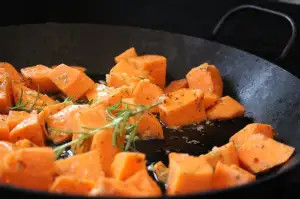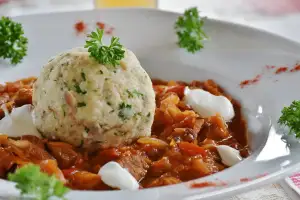Mastering the Art of Boiling Chicken Breast: A Step-by-Step Guide for Tender and Flavorful Results

Boiling chicken breast is a simple and versatile cooking method that yields tender and flavorful results. Whether you plan to use the boiled chicken breast in salads, sandwiches, or as a protein-packed addition to your favorite recipes, mastering this technique is essential for any home cook. Boiling chicken breast not only cooks the meat thoroughly but also helps retain its natural juices, resulting in moist and succulent pieces of poultry. With just a few steps, you can achieve perfectly cooked chicken breast every time. So let's dive into the art of boiling chicken breast and discover how to create delicious culinary creations with this humble ingredient.
Step 1: Gather the ingredients and equipment
Before you embark on boiling chicken breast, it's essential to gather all the necessary ingredients and equipment. Here's what you'll need:
Ingredients:
- Chicken breast: Choose boneless, skinless chicken breasts for a healthier option.
- Water: Sufficient amount to cover the chicken breasts in the pot.
- Salt: To enhance the flavor of the chicken.
Equipment:
- Large pot: Use a pot that is big enough to comfortably fit the chicken breasts and allow room for boiling water.
- Tongs or slotted spoon: These will come in handy when removing the chicken from the pot.
- Thermometer (optional): A meat thermometer can be used to check if the chicken is fully cooked.
By having all these ingredients and equipment ready, you'll be well-prepared to start boiling your chicken breast with ease and efficiency.
Step 2: Prepare the chicken breast
Before boiling the chicken breast, it is important to properly prepare it. Start by rinsing the chicken breast under cold water to remove any impurities. Pat it dry with paper towels to ensure a better sear and prevent splattering during boiling.
Next, trim any excess fat or skin from the chicken breast using a sharp knife. This will not only reduce the calorie content but also result in a leaner and healthier dish. Additionally, removing the skin allows for better absorption of flavors during the boiling process.
For added flavor, consider marinating the chicken breast before boiling. You can use a simple marinade consisting of olive oil, lemon juice, garlic, salt, and pepper. Allow the chicken breast to marinate for at least 30 minutes or up to overnight in the refrigerator.
By properly preparing the chicken breast, you can enhance its taste and texture while ensuring a delicious end result.
Step 3: Boil the chicken breast
To boil the chicken breast, fill a large pot with enough water to fully submerge the chicken. Add salt and any desired seasonings to enhance the flavor. Bring the water to a boil over medium-high heat.
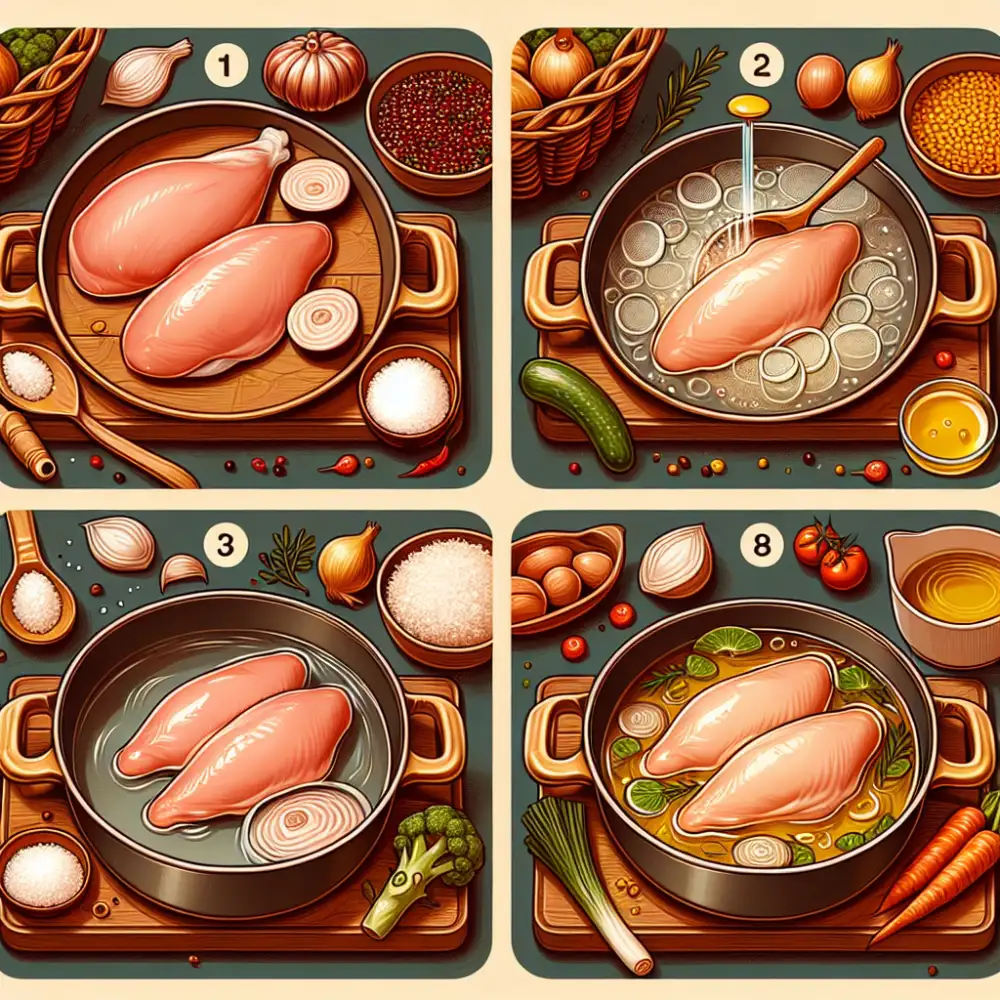
Once the water is boiling, carefully add the chicken breast to the pot. Make sure it is fully submerged in the water. Reduce the heat to low and cover the pot with a lid.
Allow the chicken breast to simmer gently for about 15-20 minutes, or until it reaches an internal temperature of 165°F (74°C). Cooking time may vary depending on the size and thickness of the chicken breast.
Avoid boiling vigorously as it can make the chicken tough and dry. Maintain a gentle simmer throughout.
During cooking, you may notice foam forming on top of the water. Skim off this foam using a spoon or ladle to keep your broth clear and clean-tasting.
Remember not to overcook your chicken breast as it can become rubbery and lose its juiciness. Use a meat thermometer to ensure proper doneness.
Boiling is an excellent method for cooking chicken breasts as it retains their natural moisture while infusing them with flavor from seasonings.
Step 4: Check for doneness
To ensure that your chicken breast is cooked thoroughly, it's important to check for doneness. The safest way to do this is by using a meat thermometer. Insert the thermometer into the thickest part of the chicken breast, making sure not to touch the bone. The internal temperature should reach 165°F (74°C) for fully cooked chicken.
If you don't have a meat thermometer, you can also check for doneness by cutting into the thickest part of the chicken breast. The meat should be white throughout with no traces of pink or translucent areas. Additionally, the juices should run clear and not appear bloody.
Remember, undercooked chicken can lead to foodborne illnesses such as salmonella. It's crucial to ensure that your chicken breast reaches the appropriate internal temperature before consuming it.
Step 5: Remove the chicken breast from the pot
Once the chicken breast is cooked to perfection, it's time to remove it from the pot. Using a pair of tongs or a slotted spoon, carefully lift the chicken breast out of the boiling water. Be cautious not to burn yourself with the hot liquid.
Place the chicken breast on a clean plate or cutting board. Allow it to cool for a few minutes before proceeding to the next step. This will make it easier to handle and prevent any potential burns.
Remember, the chicken breast will continue to cook slightly as it cools down, so be mindful not to overcook it during this process. The goal is to achieve tender and juicy results, and removing it promptly from the boiling water helps maintain its moisture.
By following this step, you ensure that your boiled chicken breast retains its tenderness and flavor. Now that you have successfully removed the chicken breast from the pot, you're ready for the next step in mastering this culinary technique.
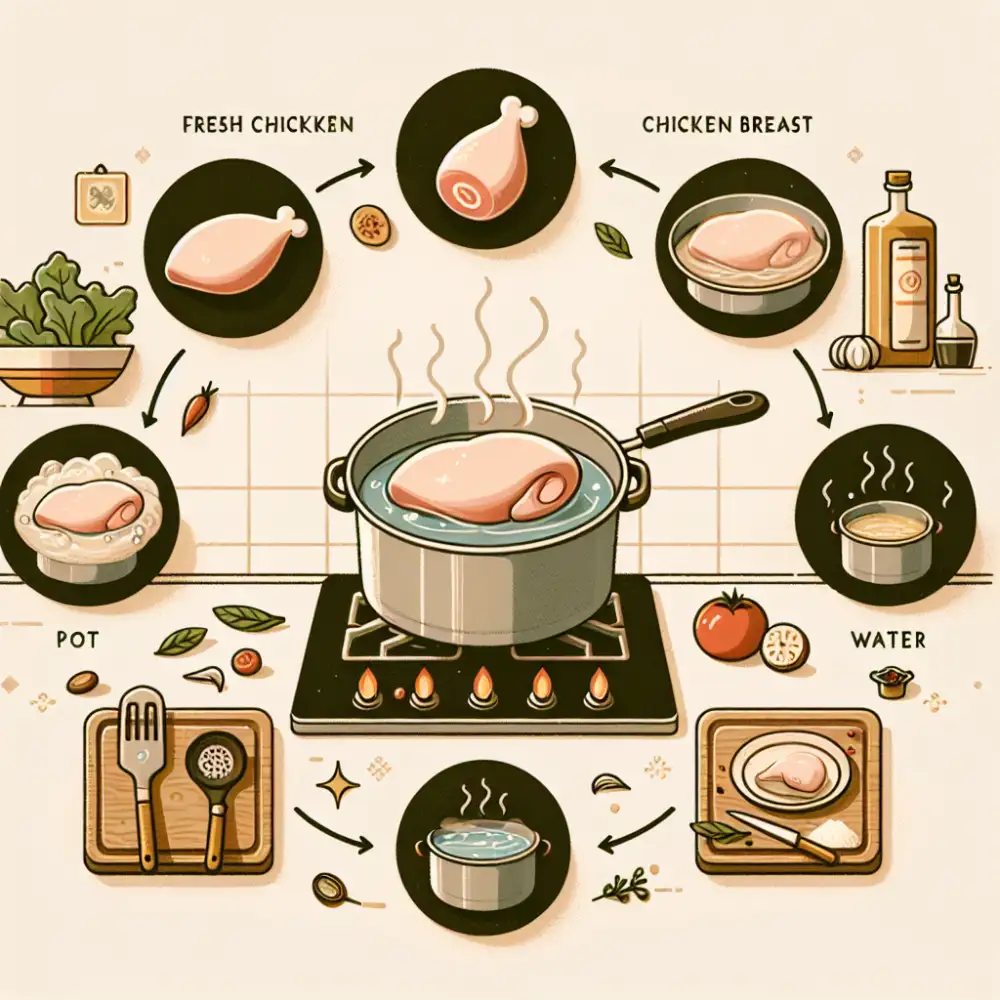
Step 6: Let the chicken breast rest
After boiling the chicken breast, it is important to let it rest for a few minutes before slicing or shredding. This allows the juices to redistribute throughout the meat, resulting in a more tender and flavorful final product.
To let the chicken breast rest, simply remove it from the pot using tongs or a slotted spoon and transfer it to a clean plate or cutting board. Cover it loosely with aluminum foil to keep it warm.
During this resting period, the residual heat will continue to cook the chicken breast slightly, ensuring that it reaches its optimal temperature and texture. Additionally, allowing the meat to rest helps retain its moisture, preventing dryness.
The recommended resting time for boiled chicken breast is around 5-10 minutes. This gives you enough time to prepare any accompanying dishes or garnishes while ensuring that your chicken remains succulent and delicious.
Remember not to skip this crucial step as rushing into slicing or shredding immediately after boiling can cause the juices to escape, resulting in dry and less flavorful meat. Patience is key when it comes to achieving tender and moist boiled chicken breast.
Once the resting period is over, you can proceed with slicing or shredding according to your recipe's requirements. The rested chicken breast will be easier to handle and maintain its juiciness throughout further preparation.
By following this step of letting your boiled chicken breast rest, you are well on your way to mastering the art of creating tender and flavorful results every time you boil chicken breast.
| Method | Cooking Time | Pros | Cons |
|---|---|---|---|
| Boiling (Start in Cold Water) | 20-25 minutes |
|
|
| Boiling (Start in Boiling Water) | 10-15 minutes |
|
|
Step 7: Shred or slice the chicken breast
Once your boiled chicken breast has cooled slightly, it's time to shred or slice it according to your preference. Shredding the chicken breast is ideal for recipes like chicken salad or tacos, while slicing works well for sandwiches or stir-fries.
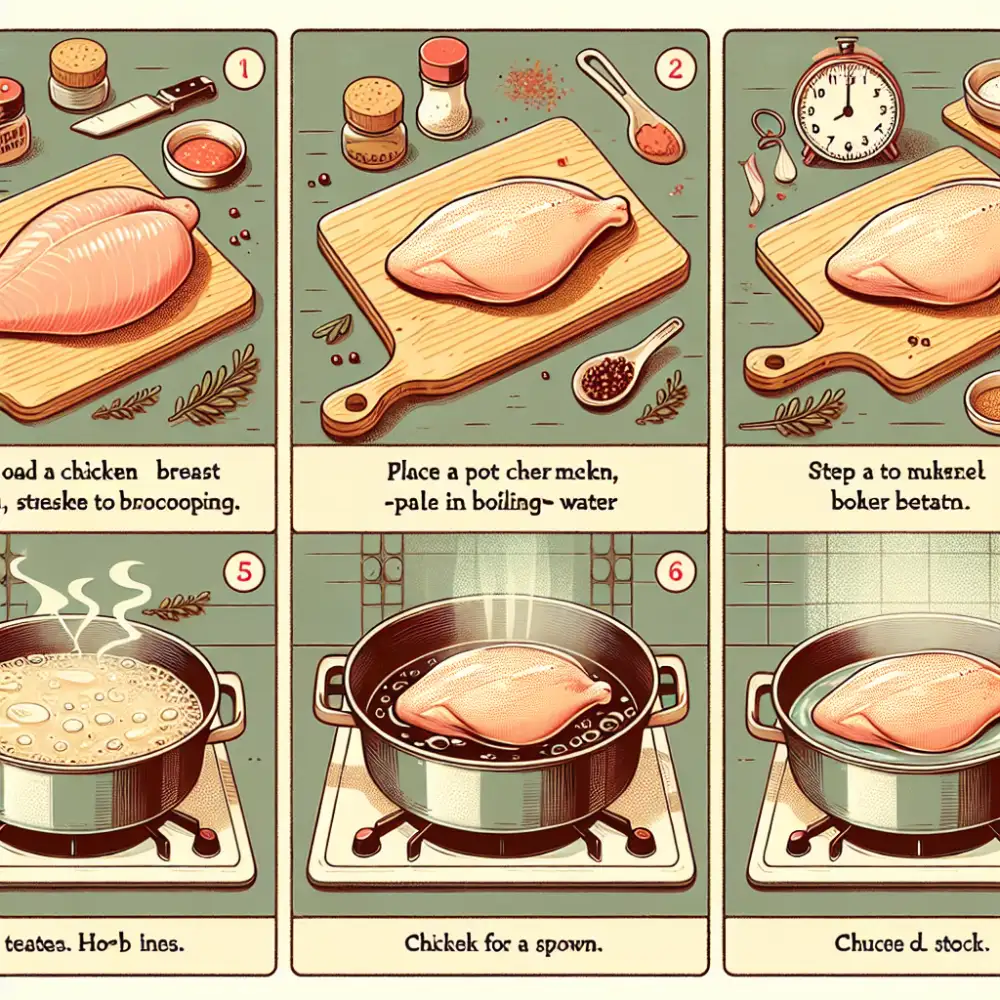

To shred the chicken breast, use two forks and pull them in opposite directions to separate the meat into thin strands. This technique helps to create a tender and juicy texture.
If you prefer sliced chicken breast, use a sharp knife and cut across the grain into thin slices. This method ensures that each slice remains moist and flavorful.
Remember to remove any visible fat or gristle as you shred or slice the chicken breast for a more enjoyable eating experience.
Now that your boiled chicken breast is shredded or sliced, it's ready to be used in various dishes. Add it to salads, soups, pasta dishes, wraps, or enjoy it on its own with some delicious sauces or seasonings.
By mastering this final step of shredding or slicing the boiled chicken breast, you can elevate your culinary creations and savor every bite of tender and flavorful meat.
Boiling chicken breast is a simple and versatile cooking method that yields tender and flavorful results. By following the step-by-step guide outlined above, you can master the art of boiling chicken breast in no time.
Remember to gather all the necessary ingredients and equipment before starting, ensuring you have fresh chicken breast, seasonings, and a large pot with enough water to fully submerge the meat. Properly preparing the chicken breast by trimming any excess fat or skin will help ensure even cooking.
During the boiling process, be mindful of maintaining a gentle simmer rather than a rolling boil to prevent overcooking and toughening of the meat. Use a meat thermometer to check for doneness, ensuring an internal temperature of 165°F (74°C) for safe consumption.
Once cooked, remove the chicken breast from the pot using tongs or a slotted spoon and allow it to rest for a few minutes. This resting period allows the juices to redistribute throughout the meat, resulting in moist and succulent chicken.
Finally, shred or slice the chicken breast according to your preference. The tender and flavorful meat can be used in various dishes such as salads, sandwiches, soups, or stir-fries.
By following these steps, you can enjoy perfectly boiled chicken breast that is not only delicious but also a healthy protein option. So go ahead and experiment with different flavors and recipes using your homemade boiled chicken breast – bon appétit!
Once your boiled chicken breast has cooled slightly, it's time to shred or slice it according to your preference. Shredding the chicken breast is ideal for recipes like chicken salad or tacos, while slicing works well for sandwiches or stir-fries.
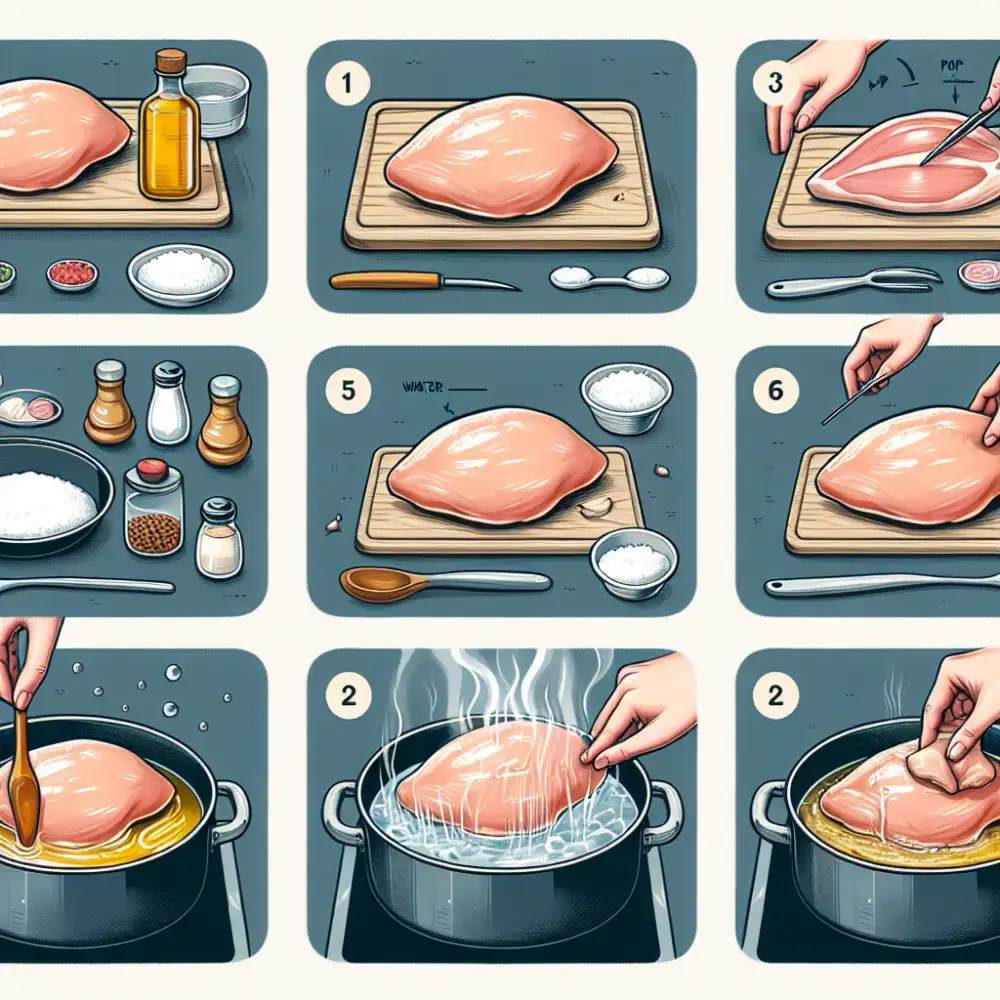
To shred the chicken breast, use two forks and pull them in opposite directions to separate the meat into thin strands. This technique helps to create a tender and juicy texture.
If you prefer sliced chicken breast, use a sharp knife and cut across the grain into thin slices. This method ensures that each slice remains moist and flavorful.
Remember to remove any visible fat or gristle as you shred or slice the chicken breast for a more enjoyable eating experience.
Now that your boiled chicken breast is shredded or sliced, it's ready to be used in various dishes. Add it to salads, soups, pasta dishes, wraps, or enjoy it on its own with some delicious sauces or seasonings.
By mastering this final step of shredding or slicing the boiled chicken breast, you can elevate your culinary creations and savor every bite of tender and flavorful meat.
Boiling chicken breast is a simple and versatile cooking method that yields tender and flavorful results. By following the step-by-step guide outlined above, you can master the art of boiling chicken breast in no time.
Remember to gather all the necessary ingredients and equipment before starting, ensuring you have fresh chicken breast, seasonings, and a large pot with enough water to fully submerge the meat. Properly preparing the chicken breast by trimming any excess fat or skin will help ensure even cooking.
During the boiling process, be mindful of maintaining a gentle simmer rather than a rolling boil to prevent overcooking and toughening of the meat. Use a meat thermometer to check for doneness, ensuring an internal temperature of 165°F (74°C) for safe consumption.
Once cooked, remove the chicken breast from the pot using tongs or a slotted spoon and allow it to rest for a few minutes. This resting period allows the juices to redistribute throughout the meat, resulting in moist and succulent chicken.
Finally, shred or slice the chicken breast according to your preference. The tender and flavorful meat can be used in various dishes such as salads, sandwiches, soups, or stir-fries.
By following these steps, you can enjoy perfectly boiled chicken breast that is not only delicious but also a healthy protein option. So go ahead and experiment with different flavors and recipes using your homemade boiled chicken breast – bon appétit!
Published: 01. 02. 2024
Category: Food


